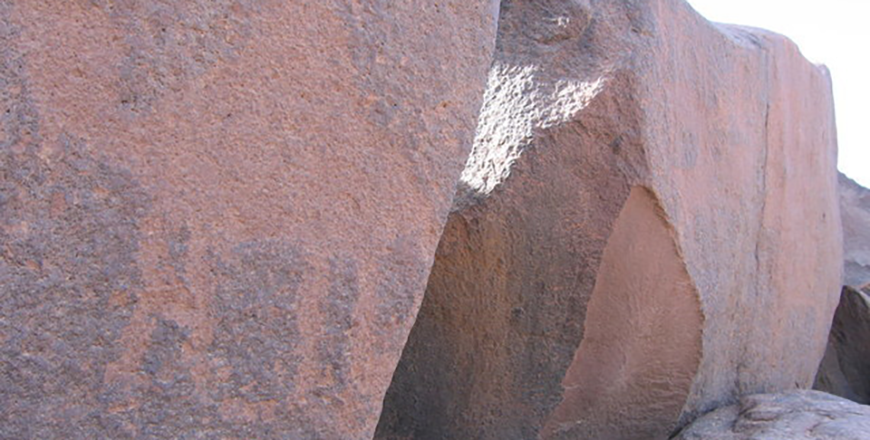You are here
Alia camel: symbol of Jordan's heritage, resilience
By Nizar Haddad - Apr 13,2025 - Last updated at Apr 13,2025

Camelids play a vital role in advancing the Sustainable Development Goals related to the fight against hunger, the eradication of poverty, the empowerment of women, and the sustainable use of terrestrial ecosystems (Photos courtesy of Nizar Haddad)
AMMAN — The United Nations declared 2024 the International Year of Camelids (IYC 2024).
Camels, llamas, alpacas, vicunas, and guanacos are an important source of livelihood for millions of families in deserts and mountainous rangelands around the world.
Camelids play a vital role in advancing the Sustainable Development Goals related to the fight against hunger, the eradication of poverty, the empowerment of women, and the sustainable use of terrestrial ecosystems. From providing milk, meat, fiber, and organic fertiliser to transporting products and people, camelids thrive where other livestock species cannot survive.
Jordan
In celebration of camels and Bedouin communities in Jordan, the National Agricultural Research Centre (NARC), under the patronage of Nizar Haddad (Researcher and former Director General of NARC), and in partnership with Nico Dingemans (founder of From Farm to Fork in Jordan) and Sami Allawama (founder of Camelera camel milk products), organised Ships of the Desert in May 2024 in Wadi Rum, the first IYC event in the Middle East and North Africa.
Haddad also led the scientific research The Alia Camel of Jordan: a genetically distinct dromedary breed, which will be published soon, demonstrating that the Alia camels are genetically distinct and deserve preservation.
Mohammed Araishi, camel expert at NARC and the Livestock Research Directorate, played a key role in this project.
In October 2024, Dingemans and Allawama organised a second camelids event in partnership with FAO Jordan in Amman.
In part one of this two-part article, Dingemans delves into the socioeconomic and gastronomic significance of camels and camel products, such as milk, cheese varieties, and meat, with contributions from Allawama, while part two (this article) explores the results of scientific and heritage research by Haddad, Araishi, and the research team.
A unique breed in the heart of Jordan
Among the diverse types of dromedaries, the Alia camel (locally known as “Jamal Alia”) is a genetically distinct breed found primarily in the arid landscapes of Wadi Araba in the south, and the Jordan Valley in the east.
It captured the attention of scientists and cultural enthusiasts alike as recent advanced genomic research identified its’ genetic uniqueness due to the exceptional endurance, high milk production, and adaptability to Jordan’s diverse environments.
Beyond its biological importance, the Alia camel holds a “special” place in Jordanian culture and history, symbolising resilience, and ingenuity.
Heritage written in stone
The Alia camel has been a part of Jordan’s history since ancient times, dating back to the Nabataean civilisation.
Archaeological findings in Petra, including ancient carvings of camels in the Siq, reflect the essential role of camels as indispensable companions for trade and transportation across the Arabian Peninsula.
Oral traditions attribute the Alia camel’s lineage to the camels of Ali ibn Abi Talib, the son-in-law of the Prophet Muhammad, further elevating its cultural importance among Jordanian Bedouins.
In Jordan’s Eastern Desert, rock art further depicts the enduring relationship between camels and Indigenous people of the region. These carvings, etched into the sandstone by early inhabitants, serve as a testament to the camel’s importance in daily life and survival, and its’ cultural significance is embedded in folklore and identity, social practices and artistic representation.
Collaborative research and discovery
The “groundbreaking” research was made possible through the collaboration of several esteemed institutions, including NARC, the University of Jordan, and Victory Genomics.
The Alia camel project I initiated as Haddad was supported by the National Centre for Research and Development of the Higher Council for Science and Technology of Jordan, following his prior genetic studies of local Awassi sheep, historical Mehras olive trees, and indigenous honeybee populations, showcasing Jordan’s rich agricultural biodiversity.
Why Alia camel stands out
The study leveraged whole-genome sequencing (WGS), confirming that the Alia camel is genetically distinct from other dromedaries in the Arabian Peninsula. Its’ phenotypic characteristics show remarkable traits, such as endurance and speed, high milk yield, adaptability and genetic distinction.
This genetic distinctiveness is not due to geographical isolation but rather careful breeding practices in Jordan and the Alia camel’s genetic diversity is comparable to or greater than other camel populations, emphasising its biological significance.
Challenges, call for conservation
Despite its resilience, the Alia camel faces numerous challenges, including habitat loss, modernisation, and a lack of formal recognition as a distinct breed. Conservation efforts are essential to preserving its legacy.
Conservation matters due to several aspects related to cultural preservation, economic value, biodiversity.
To ensure its survival, several steps must be taken, including official breed recognition, expanded research and monitoring, sustainable breeding, research expansion and public awareness.
Related Articles
AMMAN — The United Nations declared 2024 the International Year of Camelids (IYC) and is encouraging governments, cities, researchers, journ
AMMAN — The dromedary or one-humped camel is Arabia’s legendary animal and it features rock art from the time immemorial.
AMMAN — The National Agricultural Research Centre (NARC), in collaboration with Jordan Date Association (JODA) has conducted training for ag














